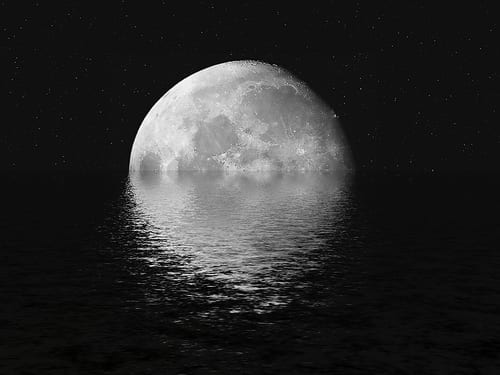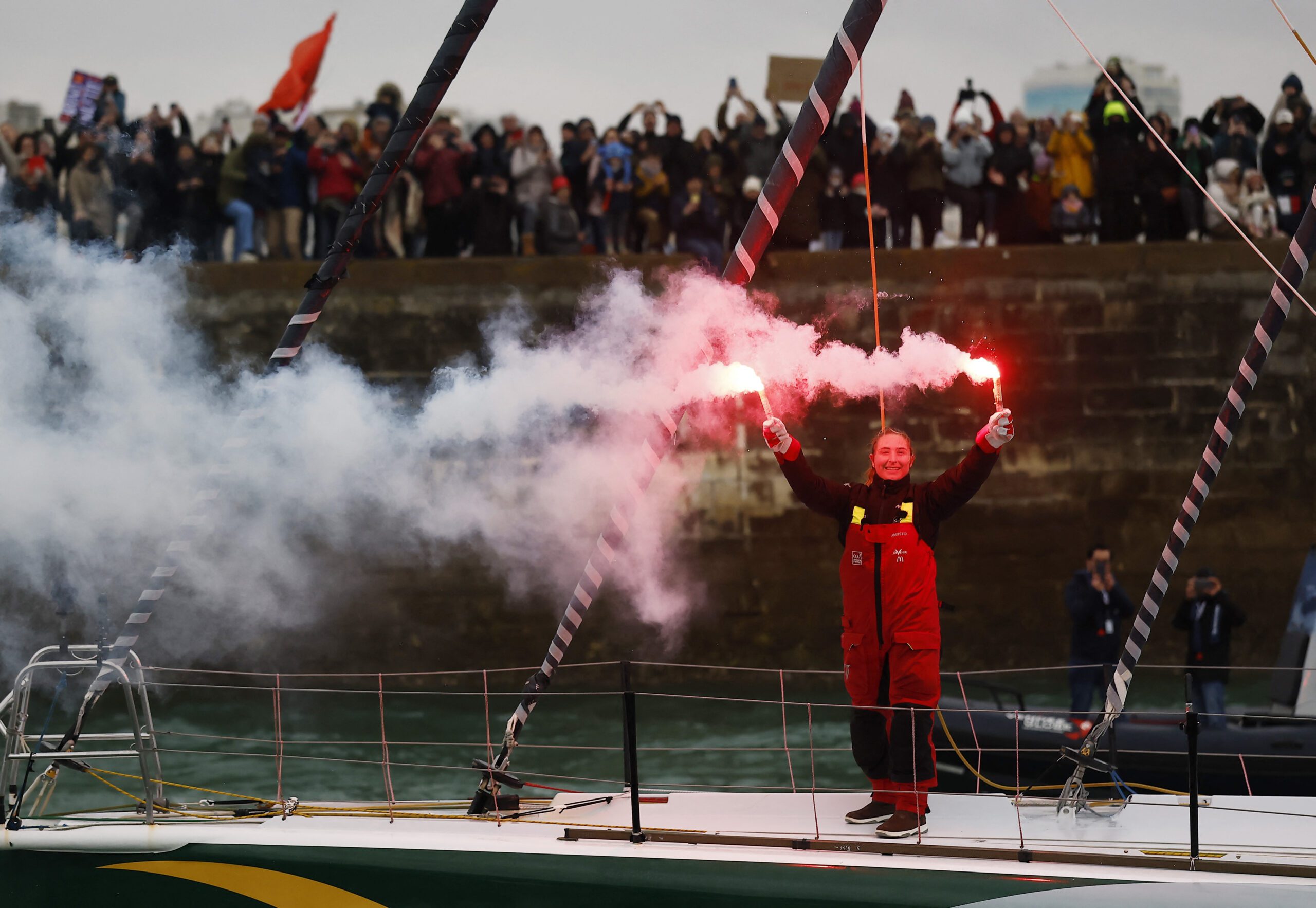
The above photo was taken using a technique we published in a story titled “Shipboard Digital Camera Tricks“. Many more great moon pictures by the photographer, Licya, can be found HERE.
by Miranda Max
Sailors and captains have been using the moon to navigate the sea for ages. The history between the moon and the sea is deep and rich. We find the relationship even in literature, as in Emily Dickinson’s The Moon is Distant from the Sea.
The moon is distant from the sea,
And yet with amber hands
She leads him, docile as a boy,
Along appointed sands.
He never misses a degree;
Obedient to her eye,
He comes just so far toward the town,
Just so far goes away.
Oh, Signor, thine the amber hand,
And mine the distant sea, —
Obedient to the least command
Thine eyes impose on me.
Celestial navigation, also known as astronavigation, has evolved over several thousand years. Throughout this time the moon has helped sailors cross oceans without having to rely on estimated calculations and physical features. While the sun may be the easiest and most commonly used natural compass, the moon works just as well for the skilled navigator.
Angular measurements, when taken between celestial bodies in the sky and the visible horizon, are used to locate one’s position on land or at sea. Any celestial body is located directly over only one specific geographic point at all times. This location can be described by latitude and longitude and is known as the celestial body’s “GP”. From here, the precise location of a ship at sea can be determined by referring to the Nautical or Air Almanac, locating that exact second of time, for that calendar year.
Today the U.S. Navy and U.S. Air Force continue to instruct sailors and aviators on the moon and its use in determining your position. Using the moon for navigation has many benefits, such as its ability to be used independently of ground aids, its global coverage, its constant availability despite occasional cloud coverage, and the fact that it is much larger and easier to recognize than stars and planets.
If it weren’t for the relationship between the moon and tides, navigation wouldn’t be possible. A significant gravitational pull exists between the earth and the moon. This pull causes tides in the ocean to occur. As the moon’s gravity pulls the earth and water towards it, the water moves to the side of the earth that faces the moon. At this same instant, another force pulls the water in the opposite direction because of inertia. Furthermore, these two opposing forces are equal to each other, and are always simultaneously moving toward and away from the moon.
Navigating by moon is accomplished relatively easily using the celestial navigation tables and a sextant. Today we keep alive a rich history of ocean navigation through photos and old stories, calling to mind the images of ships from long ago and sailors who never miss a degree, obedient to the moon as their captain.

 Join The Club
Join The Club











